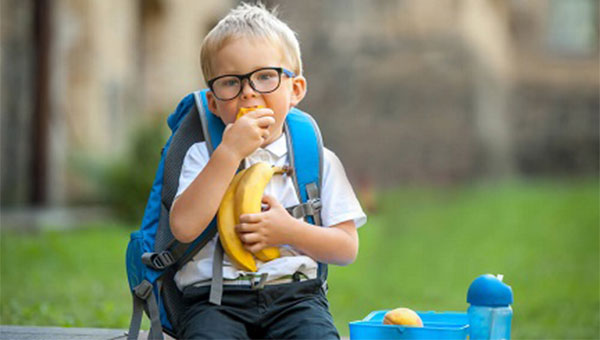Mom always said you need brain food for school, but what’s the right kind of fuel to get you from the bus stop all the way through reading, writing and arithmetic? The food pyramid, as most of us remember it, has changed significantly and the number of calories a child needs varies by age and activity level. For children, more calories are needed at older ages. For example, according to the U.S. Department of Health and Human Services, girls and boys who are somewhat active and are age 4-8 should be eating between 1,400-1,600 calories.
The pyramid has morphed into what doctors are now referring to as a plate. MyPlate is a reminder that everything you eat and drink matters. Half of the plate is dedicated to fruits and vegetables, most of which is vegetables. The other half is split between protein and grains with the emphasis on grains. Finally, dairy is all fluid milk products. The United States Department of Agriculture recommends that children ages 4-8
Breakfast Is the Most Important Meal of the Day
Cereal is great, but may not be the best start to your child’s day. In some cases, cereal isn’t any healthier than a donut. You should provide your kids with balanced meals to start the day. Do your best to balance protein, fat and grains. Fruit is also good, but high in sugar, which means you should pair it with protein. Here are a few ideas to get your kids off to a good start:
- Whole grain waffle with peanut butter
- Half a peanut butter sandwich
- Smoothie (Liquid egg whites, Greek yogurt with protein, frozen banana, handful of spinach or kale, and your child’s favorite fruit)
- Hard-boiled egg with cheese stick and toast
Fuel Their Day with a Healthy Lunch Menu
A healthy packed lunch should have vegetable, protein, grain and drink. If possible, use a freezable lunch box or ice pack to keep all their foods at the right temperature. Portion control and variety are important. Consider small sandwich bags of several items. Lunch boxes may include:
- Celery with peanut butter
- Apple slices with cheese
- Pretzels with rolled up turkey
- Homemade lunchable (rolled up meat and cheese with crackers)
- Cheese sticks and yogurt
- Bottled water with flavor drops or powders for flavor
Healthy eating for kids starts with their parents. Parents should adopt healthy eating habits and take the lead. Prepping food each weekend for breakfasts and lunches throughout the week may help the whole family make smarter choices and help the mornings go smoothly. If you’re concerned about your child’s nutrition or need more information about healthy eating, talk to your child’s pediatrician.




